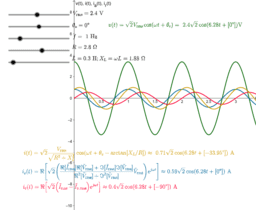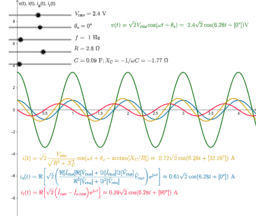Kapitel
Voltage, currents & powers waveforms in AC linear loads
This book is intended for electrical engineers, electricians, and people with knowledge of AC circuits. The purpose of this book is to illustrate the decomposition of instantaneous current into an active component and a reactive component, leading to the decomposition of instantaneous power into instantaneous active power (and active power) and instantaneous reactive power (and reactive power). This way, the user can see reactive power is just as real as active power.
I have a few answers on Quora explaining active and reactive current:
https://www.quora.com/What-is-active-and-reactive-current/answers/243814727
https://www.quora.com/How-does-Power-Factor-Correction-devices-work/answer/Alejandro-Nava-2
A great thing about those explanations is that I don't need to talk about apparent power, or power factor, or the power triangle, to explain what is reactive power. You should read the previous answers to have a better understanding of the physical meaning of reactive power in sinusoidal steady-state. You should also check this answer:
https://www.quora.com/Whats-the-physical-meaning-of-reactive-power/answer/William-Beaty
If you want to understand the physical meaning of apparent power in steady-state (sinusoidal or non-sinusoidal), you should read the following answer. A great thing about that explanation is that I don't need to talk about reactive power, or power factor, or the power triangle, to explain what is apparent power:
https://www.quora.com/What-is-the-physical-meaning-of-apparent-power-putting-aside-its-mathematical-definition/answer/Alejandro-Nava-2
Once you know the physical meaning of apparent power, the meaning of power factor in steady-state (sinusoidal or non-sinusoidal) becomes obvious.
Open the two following apps to start playing around:

